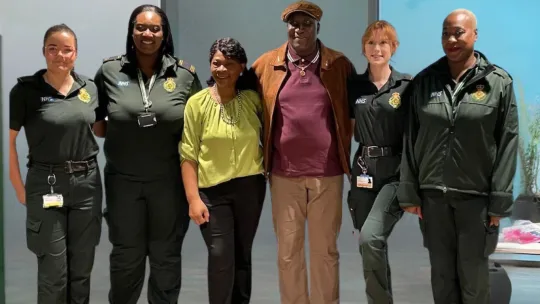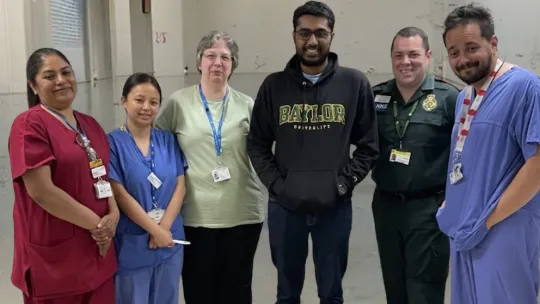
Save lives, be a London lifesaver
The importance of acting quickly following a cardiac arrest
Cardiac arrest is when a person’s heart stops beating and stops pumping blood and oxygen around the body.
A cardiac arrest can happen when you least expect it, and over 70 percent of them happen outside of hospital.
Acting quickly to perform CPR (chest compressions) or to use the nearest defibrillator could make a huge difference and help increase a person’s chances of surviving.
That’s why the Mayor, the London Ambulance Service and Transport for London have partnered to increase public access to defibrillators and equip Londoners with the skills and confidence to act in an emergency.
Learn lifesaving skills
Performing CPR or using a defibrillator can help ensure the heart is pumping and the brain isn’t being starved of oxygen, until medical help arrives.
CPR is when you push down hard on the chest continuously to help the heart pump blood around the body. Meanwhile a defibrillator gives a high energy electric shock to the heart of someone in cardiac arrest.
Watch the video below and learn how to perform CPR and how to use a defibrillator.
Playing this video will set cookies from YouTube/Google
This video featuring London Ambulance Service paramedic, Alexa Barton, and Dr. Chris Van Tulleken demonstrates how to recognise the signs, and how to perform CPR or use a defibrillator to help. Learning is simple and your help, while ambulance crews arrive, can make all the difference.
London Ambulance Service also organises emergency life support training courses for communities and organisations.
How trained Londoners are saving lives
Other things you can do to help
Buy a defibrillator
Any business or community could benefit from a public access defibrillator.
Visit the British Heart Foundation or St John Ambulance for info on where to buy one.
Register a defibrillator
Does your business or community organisation have a defibrillator?
Make sure it’s registered on The Circuit, a national defibrillator network, so emergency services can find it in an emergency.
Hone your skills
Even if you don’t have a defibrillator, CPR or chest compressions can still give someone their best chance of surviving.
If you have a phone and 15 minutes, check out BHF’s RevivR.
Join the conversation and let us know how familiar you are with CPR and using a defibrillator
Talk LondonWhat the Mayor is doing to support London’s response
Everyone travelling in our great city deserves to feel safe and confident that they will be helped in an emergency.
Last year the London Ambulance Service reportedly responded to nearly 13,000 cardiac arrests. For every minute that goes by without life-saving intervention like CPR and defibrillation, the chances of a person surviving cardiac arrest decrease by 10 per cent.
In October 2022, the Mayor took London Lifesaver training with the LAS, and learned these vital skills. And he believes any Londoner can make a difference in an emergency, with the right training and the right kit.
From today, every TfL Underground and Overground stations, and a number of key surface locations – such as dial-a-rides, main bus stations, interchanges and piers – will have a defibrillator that can be accessed by any Londoner who needs it.




